Archive
We make History
- Book
- We make History
Word Count: 3
- Robert Ziller(Richard Ziegler)
- 1940
- 1940
Allen & Unwin, Ruskin House, 40 Museum Street, Bloomsbury (now Holborn), London WC1.
- London (GB)
In 1940, émigré artist Richard Ziegler, using the pseudonym Robert Ziller, published the book We Make History with the Allen & Unwin publishing house in London.
Word Count: 25
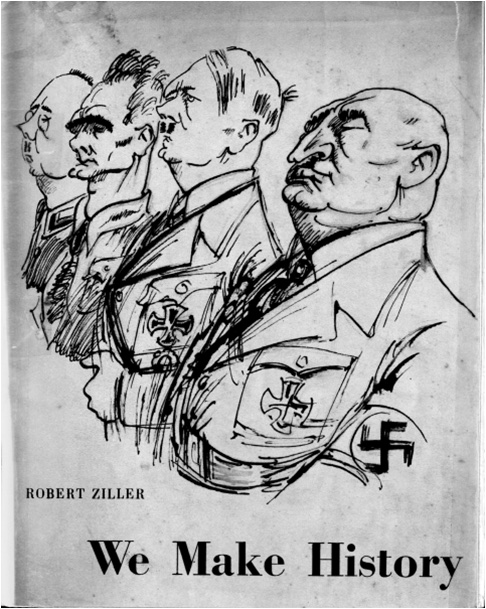
Robert Ziller [Richard Ziegler]. We Make history. Allen & Unwin, 1940, cover (© Richard Ziegler). 
Robert Ziller [Richard Ziegler]. We Make history. Allen & Unwin, 1940, n.p.: Joseph Goebbels (© Richard Ziegler). 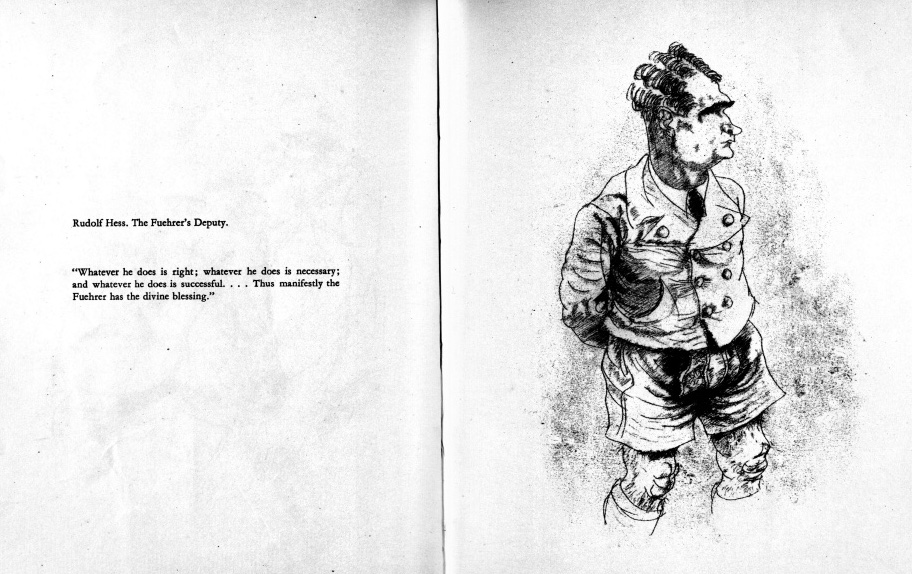
Robert Ziller [Richard Ziegler]. We Make history. Allen & Unwin, 1940, n.p.: Rudolf Hess (© Richard Ziegler). 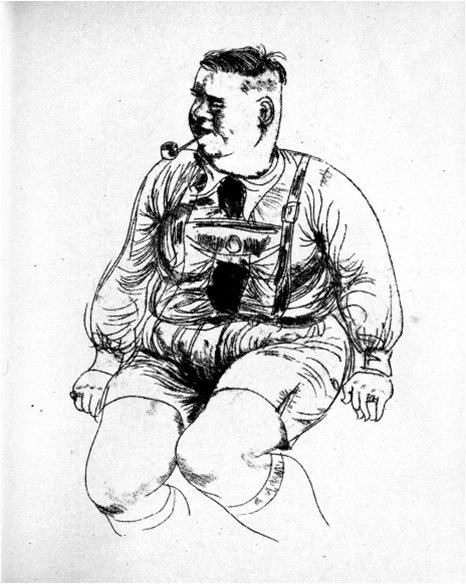
Robert Ziller [Richard Ziegler]. We Make history. Allen & Unwin, 1940, n.p.: Baldur von Schirach (© Richard Ziegler). 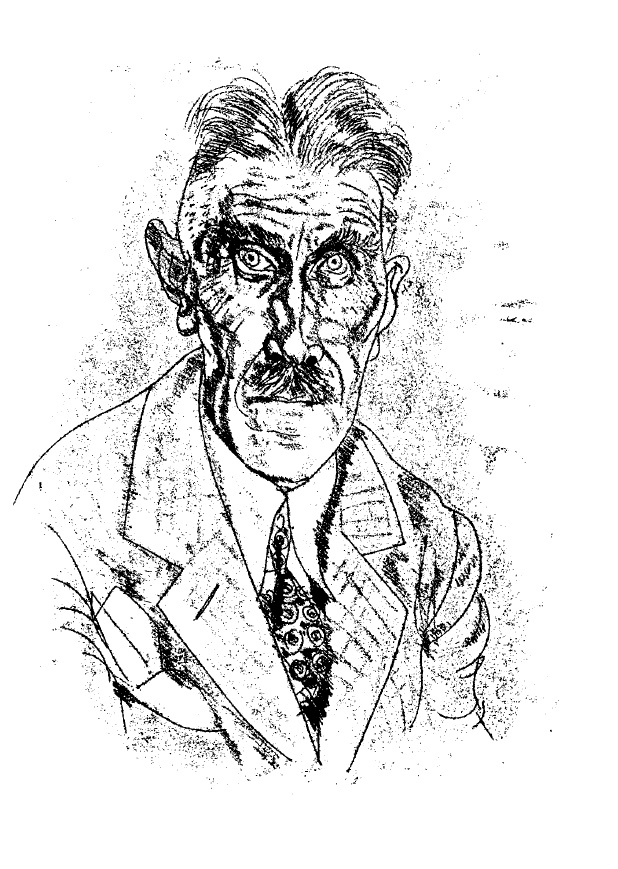
Robert Ziller [Richard Ziegler]. We Make history. Allen & Unwin, 1940, n.p., Franz von Papen (© Richard Ziegler). 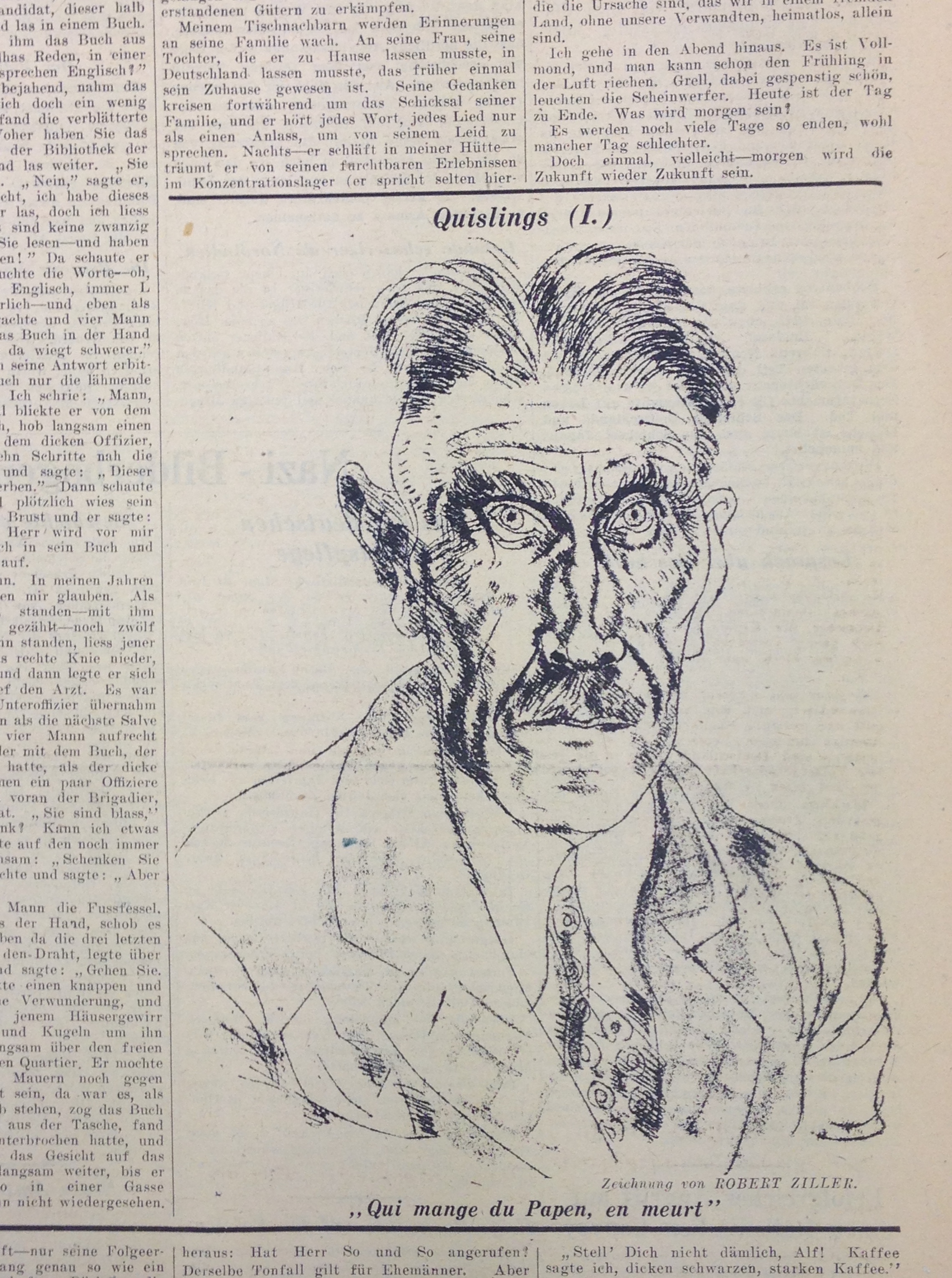
Robert Ziller [Richard Ziegler], Quislings (I.): “Qui mange du Papen, en meurt", in Die Zeitung, 29 March 1941, p. 3 (© Richard Ziegler). 
Robert Ziller [Richard Ziegler]. We Make history, Allen & Unwin, 1940, n.p.: Adolf Hitler (© Richard Ziegler). Dogramaci, Burcu. “Der Stift als Seziermesser im englischen Exil. Politische Zeichnungen von Richard Ziegler und Walter Trier für Die Zeitung.” Exil im Krieg (1939–1945), edited by Hiltrud Häntzschel et al., V&R, 2016, pp. 99–110.
Hiepe, Richard. “Deutschland ist erwacht. Die antifaschistischen Zeichnungen von Richard Ziegler.” Sammlung. Jahrbuch für antifaschistische Literatur und Kunst, vol. 2, edited by Uwe Naumann, Röderberg, 1979, pp. 80–87.
Kris, Ernst. “Zur Psychologie der Karikatur.” Imago, vol. 20, 1934, pp. 450–466.
Richard Ziegler. Bücher und Bilderbogen. Zum 90. Geburtstag, exh. cat. Heimatmuseum Calw, Calw, 1981.
Rogge, Heiko. “Die Richard-Ziegler-Stiftung in Calw.” Richard Ziegler Stiftung Calw, exh. cat. Richard-Ziegler-Stiftung, Calw, 1983, pp. 5–28.
Schlichtenmaier, Bert. “Zu Richard Zieglers Werk der zwanziger Jahre.” Richard Ziegler, geb. 1891 in Pforzheim, exh. cat. Galerie Schlichtenmaier, Grafenau, 1989, pp. 9–13.
Taylor, John Russell. “Introduction.” Richard Ziegler. The Berlin Twenties, exh. cat. Camden Arts Centre, London, 1983, pp. 3–5.
Word Count: 135
- London
- Burcu Dogramaci. "We make History." METROMOD Archive, 2021, https://archive.metromod.net/viewer.p/69/1470/object/5140-8103273, last modified: 12-05-2021.
-
Die ZeitungNewspaperLondon
From 1941 to 1945, the émigré German-language newspaper Die Zeitung was published in London, reporting on the war on the continent and on the situation in Germany.
Word Count: 25
LilliputMagazineLondonThe magazine Lilliput, founded by the émigré journalist Stefan Lorant in 1937, gave work to emigrated artists and photographers such as Kurt Hutton, Walter Suschitzky, Walter Trier and Edith Tudor-Hart.
Word Count: 29